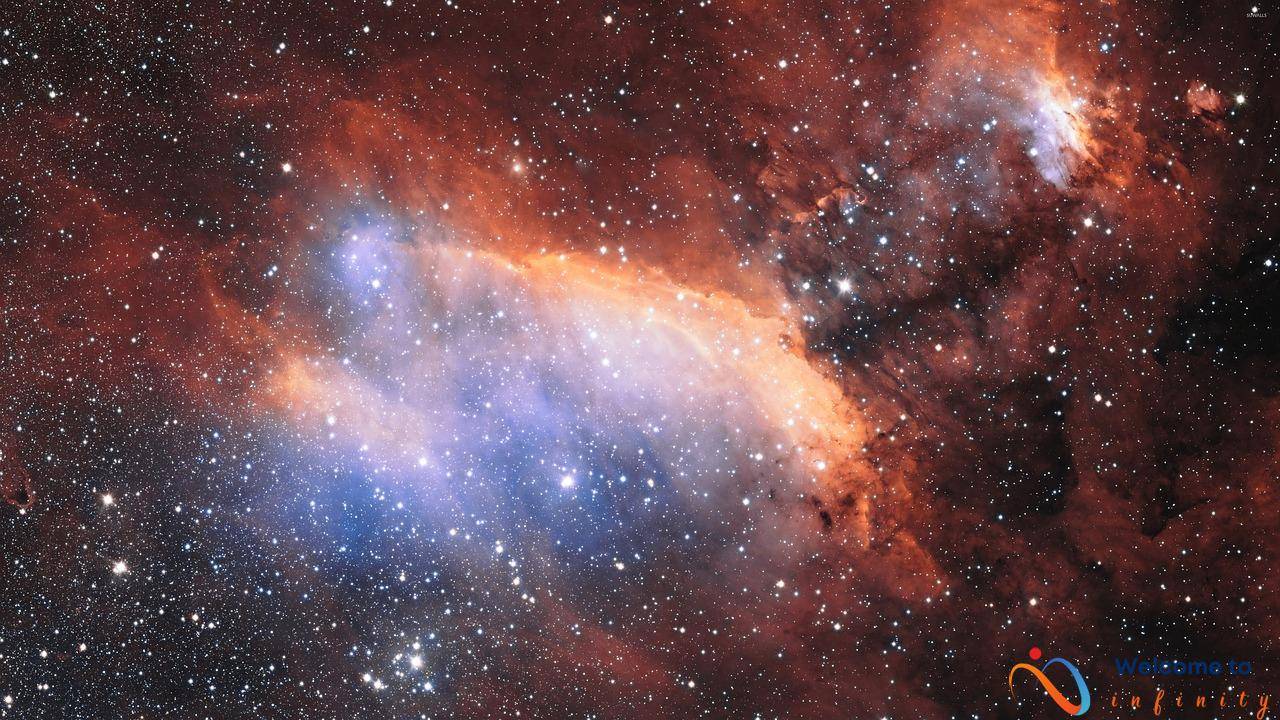the significance of planets in the universe cannot be overstated. These celestial bodies are essential to the creation and maintenance of the universe as we know it. The planets in our solar system alone vary greatly in size, composition, and atmosphere, making them fascinating subjects of study.
Planets are defined as celestial bodies that orbit a star and are large enough to have cleared their orbits of other debris. They are classified according to their size, composition, and distance from their star. Each planet has unique characteristics that make them a vital part of the larger system.
In our solar system, the eight planets play a crucial role in creating a habitable environment for life. The inner planets, Mercury, Venus, earth, and Mars, are rocky and relatively small in size, while the outer planets, Jupiter, Saturn, Uranus, and neptune, are gas giants with no solid surfaces. Despite their differences, each planet works together to stabilize the gravitational pull in our solar system. This gravitational balance is essential for the habitable environment on Earth, making it a life-sustaining planet.
The study of planets holds significant importance in advancing space technology. By understanding the characteristics and composition of the planets, scientists gain valuable insight into the creation and evolution of the universe. Moreover, studying planets helps us to understand the potential for life beyond our planet and how to sustain it.
- Mercury: The smallest planet in the solar system and the closest planet to the sun.
- Venus: Known for its thick, toxic atmosphere, Venus is the second planet from the sun.
- Earth: Our home planet, Earth is the third planet from the sun and the only known habitable planet in the universe.
- Mars: The second smallest planet in the solar system and the fourth planet from the sun. Mars has the potential for hosting microbial life.
The universe is vast and full of wonder, and the planets play a critical role in its creation and maintenance. The continuing search for new planets and the exploration of our own system holds the promise of exciting new discoveries in the future.
What are Planets?
Planets are celestial bodies that orbit around stars. They are formed from the same cloud of gas and dust as their central star through a process known as accretion. The definition of a planet is a celestial body that is round or nearly round, and clears its orbit of debris.
There are eight planets in our solar system, starting with the innermost planet, Mercury, followed by Venus, Earth and Mars, then the outer planets, Jupiter, Saturn, Uranus and Neptune. Each planet has its own set of unique characteristics that distinguish it from the others.
The four inner planets are rocky and terrestrial, whereas the outer planets are gas giants. Jupiter is the largest planet in our solar system, while Mars is known for its striking red coloration. Saturn is recognizable for its iconic rings while Uranus and Neptune are known as the ice giants due to their cold temperatures and icy atmospheres.
It is important to note that not all celestial bodies in space can be considered planets. Dwarf planets, such as Pluto, Ceres and Eris, are similar to planets in that they orbit around a star, but they do not meet the criteria set by the International Astronomical Union (IAU) for a planet.
- Planets are celestial bodies that orbit around a star
- They are formed through the process of accretion
- The eight planets in our solar system are divided into the inner and outer planets
- Dwarf planets do not meet the criteria to be considered planets
Understanding what planets are and their unique characteristics is essential in our quest to explore and learn more about our universe. Every planet has its own story to tell and provides important insights into how our solar system and the larger universe function.
The Role of Planets in the Solar System
Planets are one of the most crucial components of our solar system. They play a vital role in creating a habitable environment for life to flourish. Without the planets, our solar system would not be able to support life as we know it.
The planets act as gravitational anchors that help stabilize the orbits of other celestial bodies. Jupiter, for instance, is a massive planet that attracts asteroids and comets towards itself, thus protecting the Earth from potential collisions with these space rocks. The other inner planets, such as Mercury, Venus, and Mars, have different roles in creating a habitable environment.
Mercury, being the closest planet to the sun, has a very thin atmosphere, but it plays a crucial role in regulating the planet's surface temperature. Venus, on the other hand, has a thick atmosphere rich in carbon dioxide that traps heat, making it the hottest planet in the solar system. Earth, the only known planet to support life, has a perfect combination of atmosphere, water, and temperature that make it ideal for living organisms. Mars, the fourth planet, has a thin atmosphere and a harsh, cold environment, but ongoing research suggests it might have had conditions suitable for life in the past.
Outer planets, on the other hand, are primarily gas giants, consisting of hydrogen and helium, with no solid surface to support life. However, they also play a crucial role in creating a habitable environment. They absorb a considerable amount of impact from various celestial bodies that enter our solar system, protecting the inner planets from potential collisions.
In conclusion, the planets in our solar system are not just celestial objects but also critical components in creating a habitable environment. Understanding their roles and characteristics helps us appreciate the fragility of life and reinforces our connection to the universe we live in.
The Inner Planets
The inner planets or terrestrial planets comprise four planets in our solar system: Mercury, Venus, Earth, and Mars. These planets are closer to the sun compared to the outer planets and have a rocky composition.
Mercury, the smallest planet in the solar system, is closest to the sun and has a highly cratered surface covered with dust and rocky debris. Venus, the second planet, is often referred to as Earth's sister planet because of its similar size and composition. However, Venus has a thick, toxic atmosphere that traps heat, making it the hottest planet in the solar system.
Earth, the third planet, is the only planet with abundant liquid water on its surface. It has a diverse range of environments, including oceans, forests, deserts, and polar regions. Earth's atmosphere contains a perfect balance of gases to support life, making it the only known planet to harbor life.
Mars, often referred to as the Red Planet, has a thin atmosphere and a barren, rocky surface. Scientists believe that Mars once had liquid water on its surface and are currently exploring the planet to search for signs of past or current life.
In contrast to the gas giants, the inner planets are relatively small, with solid surfaces, and they lack rings. The inner planets are also much denser than the outer planets, with iron-rich cores.
Overall, the inner planets play a crucial role in understanding the formation and evolution of our solar system. Understanding the similarities and differences between these planets can help us learn more about the conditions necessary for life to exist and thrive.
The Earth as a Life-Sustaining Planet
The Earth is a truly unique planet in the solar system due to its ability to sustain life. It is the only planet in our solar system able to support complex life forms, and it owes this uniqueness to several characteristics that work together to create a balanced environment.
One of the most important factors contributing to Earth's habitability is its distance from the Sun. The Earth's orbit falls within the “Goldilocks zone,” a region where temperatures are just right to support liquid water, a fundamental requirement for life as we know it. Additionally, the Earth's atmosphere is made up of just the right blend of gases, allowing it to trap just enough heat from the Sun to maintain a stable temperature.
Another crucial feature of Earth's ability to support life is its magnetic field. This field protects the planet's atmosphere from being stripped away by the solar wind, ensuring that the planet retains its ability to support life over long periods of time. The Earth's rotation also plays a role in its habitability, creating a day and night cycle that allows for temperature regulation and provides living organisms with essential periods of rest.
The unique combination of the Earth's physical and chemical characteristics has allowed for the evolution and sustainability of life as we know it. From the vast oceans that cover the majority of the planet's surface to the diverse ecosystems that populate its landmasses, Earth is a planet unlike any other in the solar system.
As scientists and researchers continue to explore the possibility of life beyond our planet, it is essential to remember the unique factors that make Earth suitable for sustaining life. Understanding the conditions that allow life to exist on Earth can help us to identify potentially habitable worlds elsewhere in the universe and further our understanding of the vastness and complexity of the cosmos.
The Outer Planets
The outer planets, also known as the gas giants, are Jupiter, Saturn, Uranus, and Neptune. These planets are much larger than the inner planets and consist mainly of hydrogen and helium gas. Jupiter, the largest planet in the solar system, is known for its Great Red Spot, a massive storm that has been raging for over 300 years.
Saturn, known for its iconic rings, has a unique atmosphere with swirling patterns and storms. Its rings are made up of ice particles, and scientists believe they may have been formed by a comet or asteroid that came too close to the planet.
Uranus and Neptune, referred to as the ice giants, have thick atmospheres containing water, methane, and ammonia. Uranus is unique among the planets in the solar system in that it rotates on its side, which scientists believe could be due to a collision with a massive object long ago.
Neptune, the farthest planet from the sun, has a deep blue atmosphere and strong winds, with the fastest recorded wind speeds in the solar system. Despite being much farther from the sun than the inner planets, these gas giants still play a crucial role in the solar system's dynamics, affecting the orbits of other planets and asteroids through their gravitational pull.
In conclusion, the outer planets may not be as hospitable to life as the inner planets, but their unique characteristics make them vital in our understanding of the solar system. The study of these gas giants has led to the discovery of new information and advancements in space technology, making it an exciting and crucial area of research for astronomers and scientists alike.
Potential for Life on other Planets
There has been an ongoing search for life beyond Earth for many centuries. With the discovery of numerous planets scattered throughout the universe, the search for extraterrestrial life has only intensified. The potential for discovering life on other planets exists, and scientists are actively looking for answers.
One essential requirement for life is the existence of water. Scientists have discovered evidence of water on various planets, increasing the possibility of finding life forms. Other essential requirements for sustaining life are air, pressure, and a balanced temperature. In recent years, scientists have discovered planets that meet these conditions, increasing hope for the possibility of finding life on other planets.
In addition to searching for life on other planets, there is also a search for planets that can sustain human habitation. With the increasing population and advancements in space technology, the idea of colonizing another planet has become more realistic. Many scientists believe that Mars, with its similar atmospheric conditions to Earth, could be a possible replacement for humanity in the future.
However, the search for extraterrestrial life and habitation also poses ethical questions. If discovered, how should we approach these new life forms? Should we interact with them, study them, or leave them alone in their natural habitat? These are significant issues that need to be carefully considered before any action is taken.
In conclusion, the search for life beyond Earth and the possibility of sustaining life on other planets is a vital part of space exploration. It not only increases our understanding of the universe but also provides opportunities for the survival of the human species. As we continue to search for answers, it is important to keep in mind our responsibility towards any new life forms that we might discover.
Astronomy and the Importance of Understanding Planets
Astronomy is the study of celestial objects, which includes planets, stars, and galaxies. The study of planets is an essential part of astronomy, not just because they are fascinating objects to observe, but also due to the critical role they play in advancing space technology. There is a direct correlation between our understanding of planets and the advancements we have made in space exploration.
One of the primary reasons we study planets is to learn about the conditions that lead to the development and sustenance of life. The discoveries made by studying planets in our Solar System have provided valuable insights for creating and refining technologies that support human life in space. From the development of systems to recycle air and water to the creation of specialized suits for astronauts to survive in hostile environments, our research into planets has led to significant advancements in space technology.
Another benefit of studying planets is the creation of techniques to explore space. Sending spacecraft to other planets requires advanced propulsion systems, precision navigation, and long-lasting power sources. The development of these technologies was driven, in part, by our desire to explore the far reaches of our Solar System and beyond. By studying planets closer to home and utilizing the latest technology to explore them, we can gain valuable insights into the limitations and possibilities of space exploration.
In recent years, the identification and characterization of exoplanets have been an essential focus of space exploration. Exoplanets are planets that orbit stars other than our Sun, and they're revealing the prevalence and diversity of planetary systems in our galaxy. Discovering planets in other star systems requires advanced techniques for detecting planets that are vastly different from those used for planets in our Solar System. The search for exoplanets is leading to the creation of new technology and techniques that could advance our understanding of the universe and our place in it.
In conclusion, understanding planets is critical to the advancement of space technology and exploration. The study of planets in our Solar System has led to significant advancements in technology that supports human life and allows us to explore space. The discoveries made in recent years, including the identification of exoplanets, are paving the way for new advances in space technology. As long as we continue to study planets, we will keep learning more about space and our place in it.
Current and Future Space Exploration Programs
Current and future space exploration programs continue to push the boundaries of our knowledge about the planets in our solar system. NASA's Perseverance rover, which landed on Mars in February 2021, is part of the ambitious Mars Exploration Program that aims to investigate Mars' habitability, search for signs of past microbial life, and prepare for future human missions to the red planet.
The James Webb Space Telescope, set to launch in October 2021, will be the largest and most powerful telescope ever built. Its advanced capabilities will allow astronomers to study the atmospheres of exoplanets, including their potential habitability and the presence of biomarkers.
Additionally, NASA's Europa Clipper mission, set to launch in the mid-2020s, will investigate Jupiter's moon Europa, one of the most promising places in the solar system for finding extraterrestrial life. The spacecraft will study Europa's icy shell and subsurface ocean, assessing the moon's habitability and potential for life.
In the coming years, NASA also plans to launch the Dragonfly mission to Saturn's moon, Titan, utilizing a drone-like rotorcraft to explore the moon's thick atmosphere and vast, hydrocarbon-rich landscape. And the Mars Sample Return mission will aim to collect and cache samples of Martian soil and rocks for a future mission to bring them back to Earth for further analysis.
As technology continues to advance, our ability to explore and understand the planets in our solar system will also continue to expand. With ongoing and upcoming missions, scientists hope to unravel the mysteries of these fascinating worlds and gain a deeper understanding of the importance of planets in the vastness of our universe.
The Search for Exoplanets
Exoplanets, also known as extrasolar planets, are planets located outside of our solar system. The discovery of exoplanets has revolutionized our understanding of the universe and the potential for habitable planets.
Scientists have found thousands of exoplanets using various methods, including the transit method and the radial velocity method. The transit method involves observing a star's decrease in brightness as a planet passes in front of it, while the radial velocity method involves detecting small wobbles in a star's movement caused by the gravitational pull of a planet.
Exoplanet research has shown that planets are common in the universe and that there are a wide variety of planetary systems. Some exoplanets are similar to those in our solar system, while others are unlike anything we have ever encountered.
The discovery of exoplanets has also contributed to our understanding of the potential for life beyond Earth. The search for habitable exoplanets continues to be a major focus for astronomers, as the possibility of finding extraterrestrial life has captured the imagination of people around the world.
The detection of exoplanets has also led to advances in technology, such as the development of more sensitive telescopes and imaging techniques. In addition, the study of exoplanet atmospheres and compositions has provided insights into the physical and chemical processes occurring in other planetary systems.
The search for exoplanets is ongoing, and new discoveries are made regularly. These findings continue to expand our knowledge of the universe and point to the possibility of a vast array of planets and potentially habitable worlds.
Conclusion
In conclusion, planets play a vital role in shaping the universe as we know it. From the rocky inner planets that formed closer to the sun to the gas giants that are located further away, each planet has its unique characteristics and is essential for creating a habitable environment for life.
The search for life beyond Earth continues to push the boundaries of our knowledge about the universe. The discovery of exoplanets has opened up new possibilities for finding habitable worlds, and ongoing and upcoming missions to explore and understand other planets in our solar system are critical for ensuring the continued success of space exploration.
It is essential that we continue to study planets and advance our knowledge of the universe, not only for scientific advancement but for the potential benefits that can come from such research. Technology developed for space exploration has numerous real-world applications and can aid in solving various global issues.
In summary, understanding the place and importance of planets in the universe is crucial for advancing our knowledge of the cosmos. By continuing to explore and study planets, we can make new discoveries that will benefit humanity and help us better understand our place in the vast universe.











